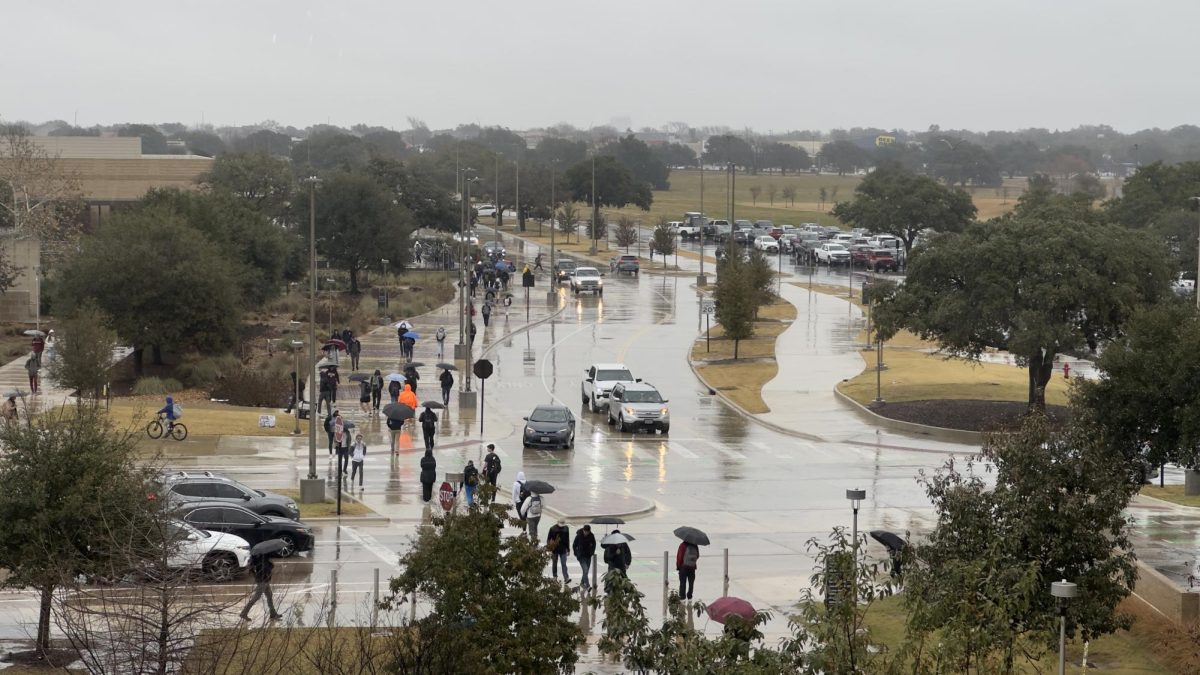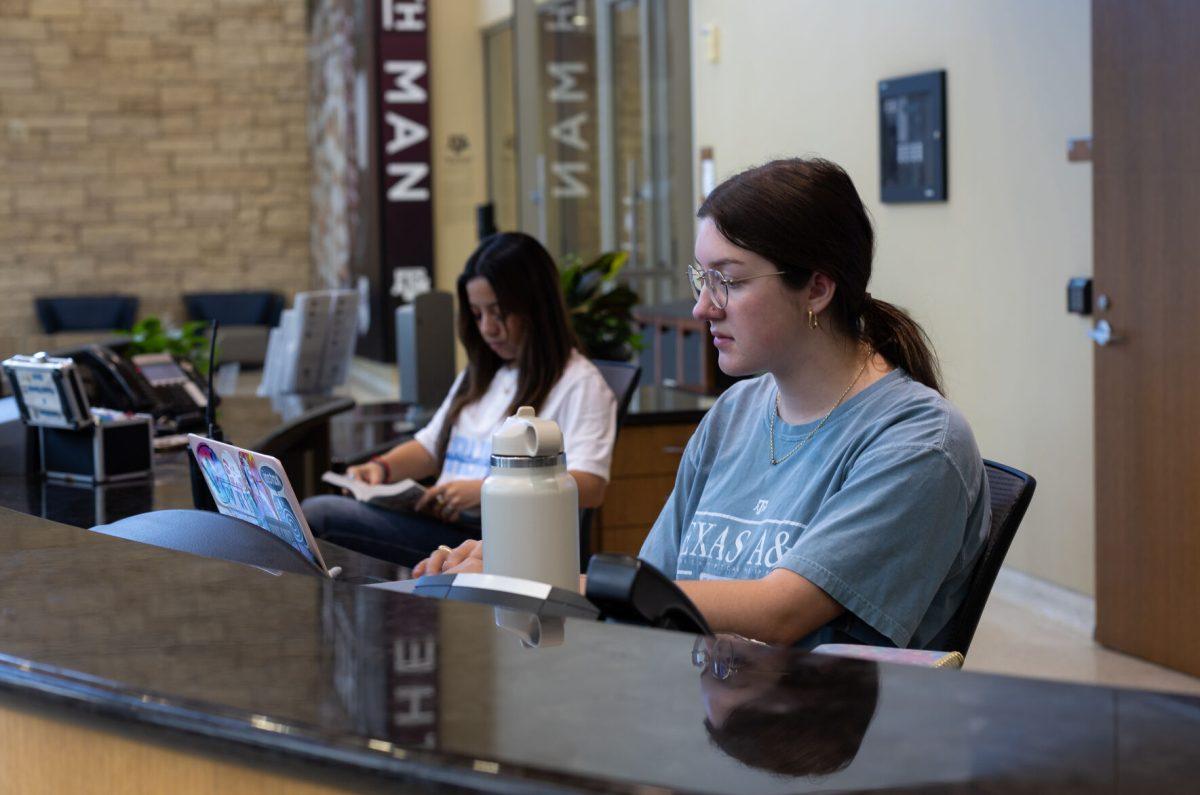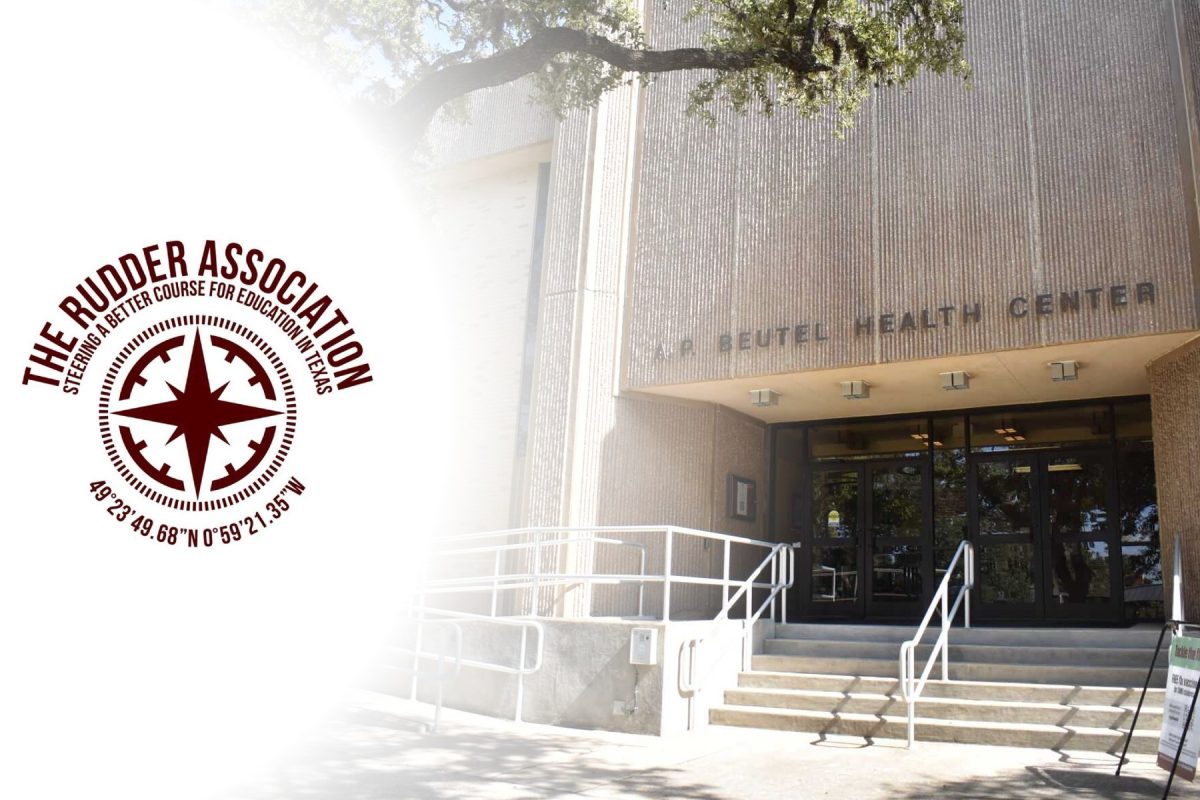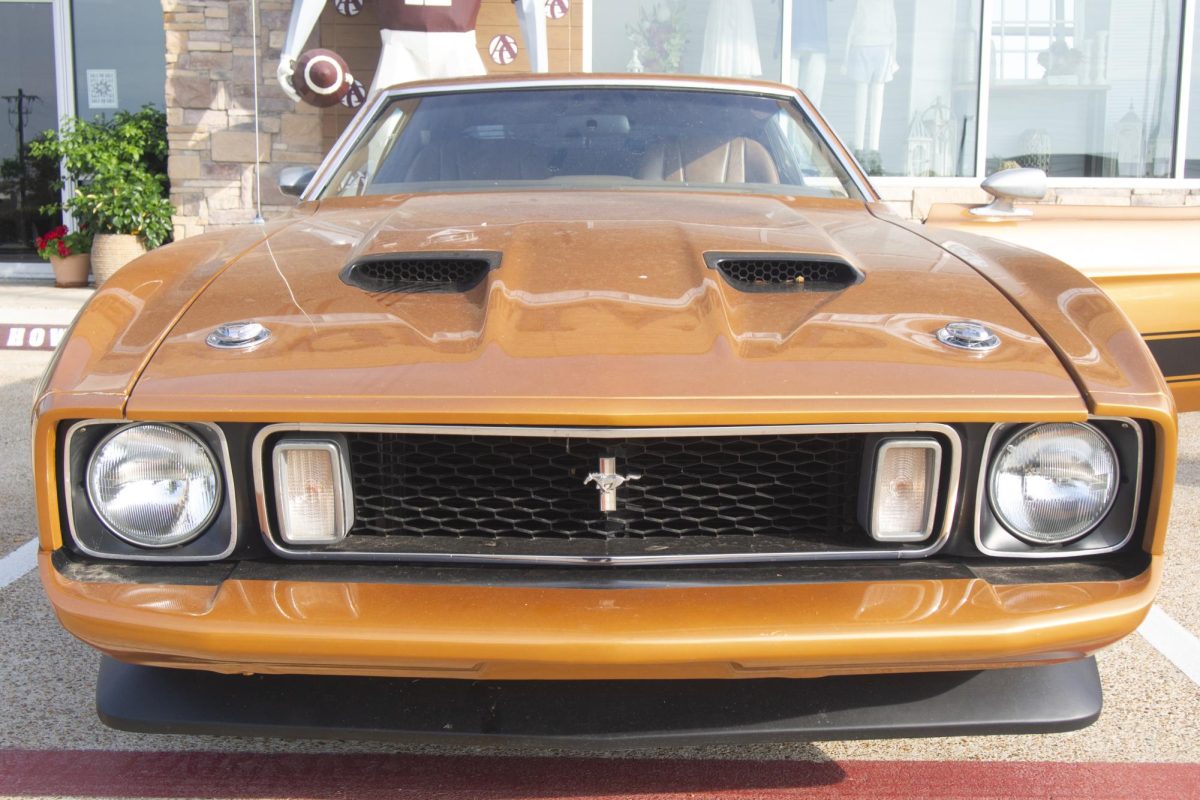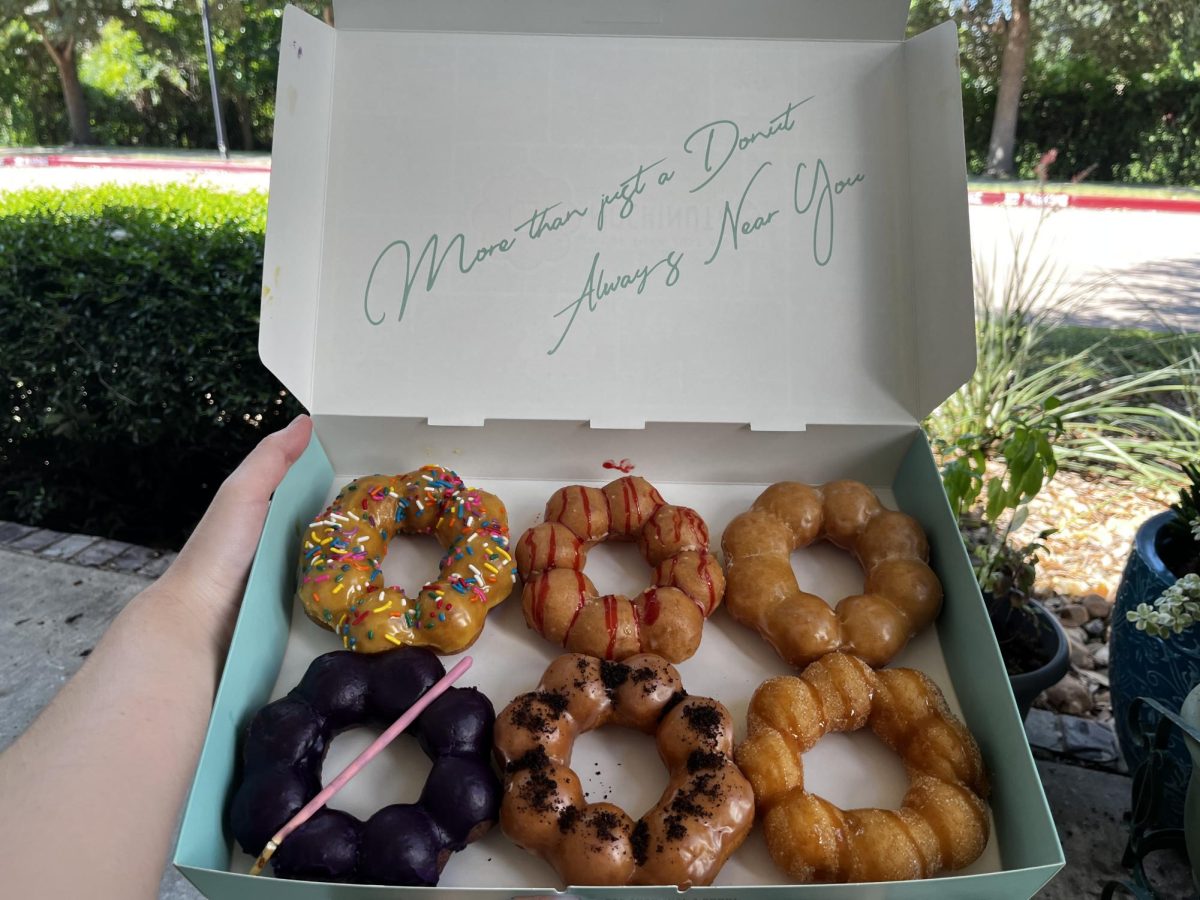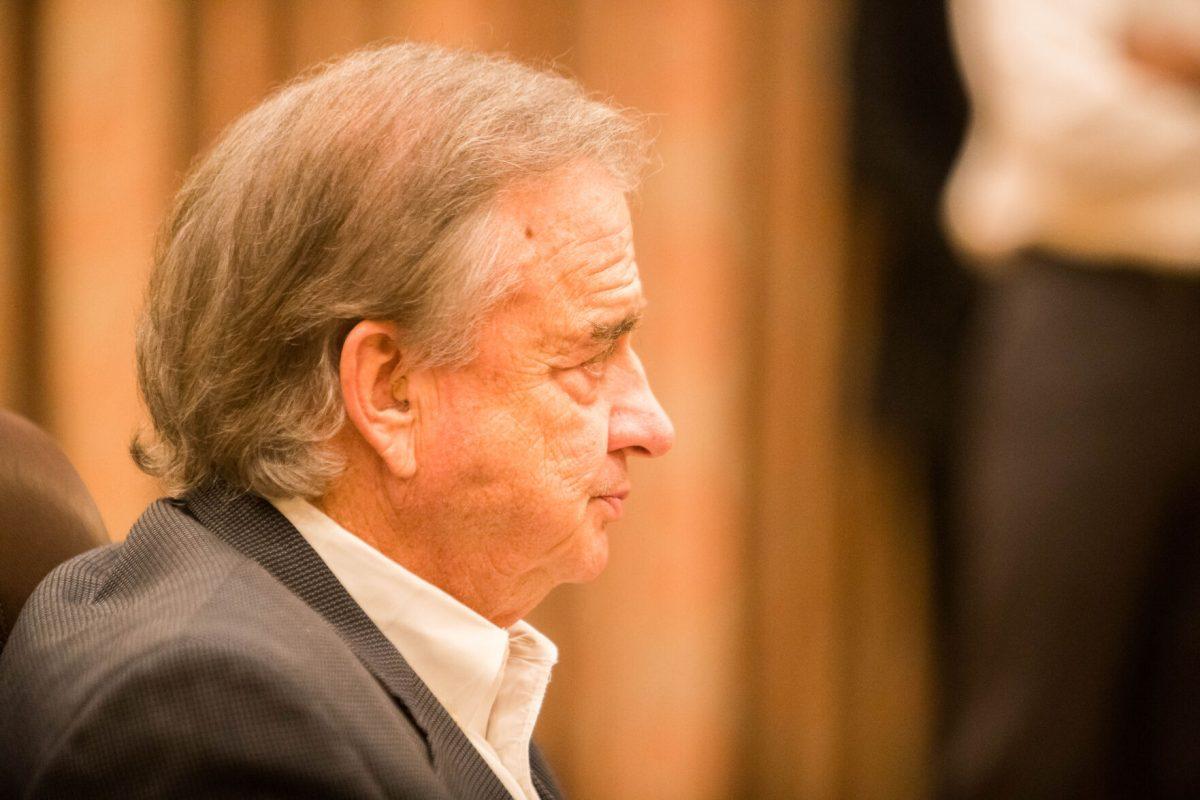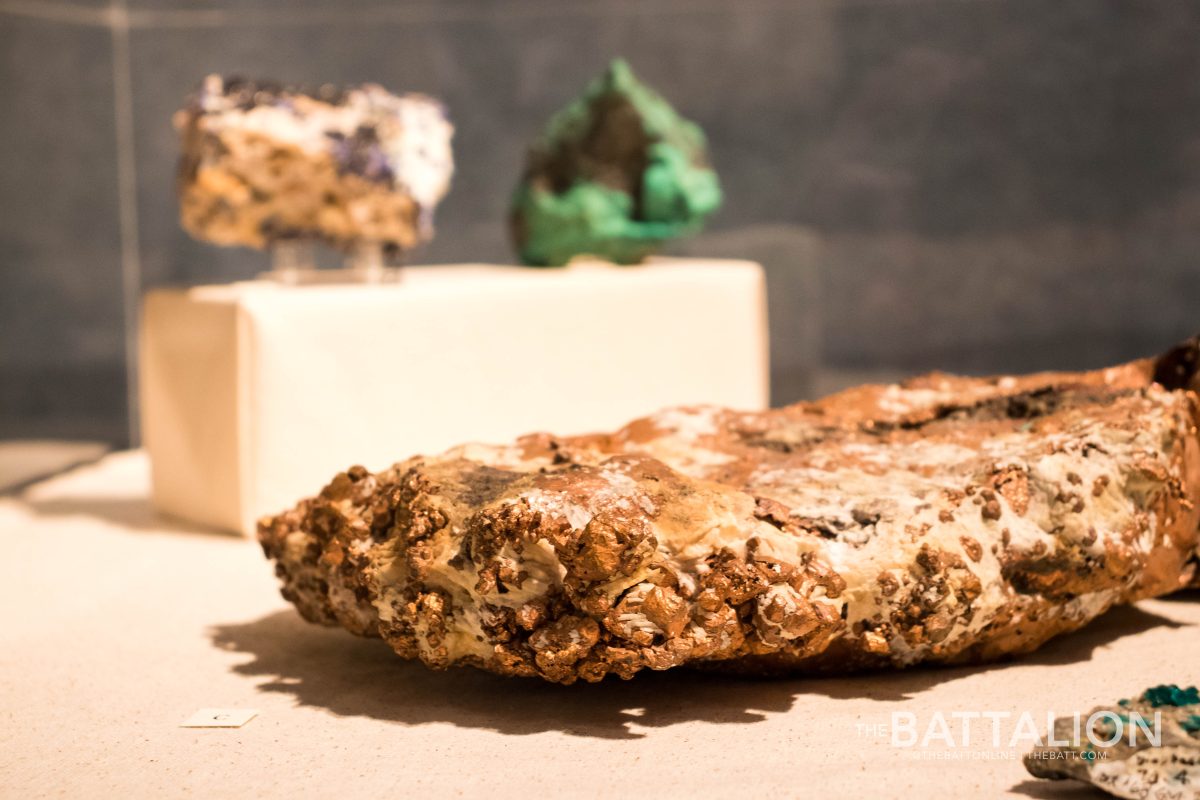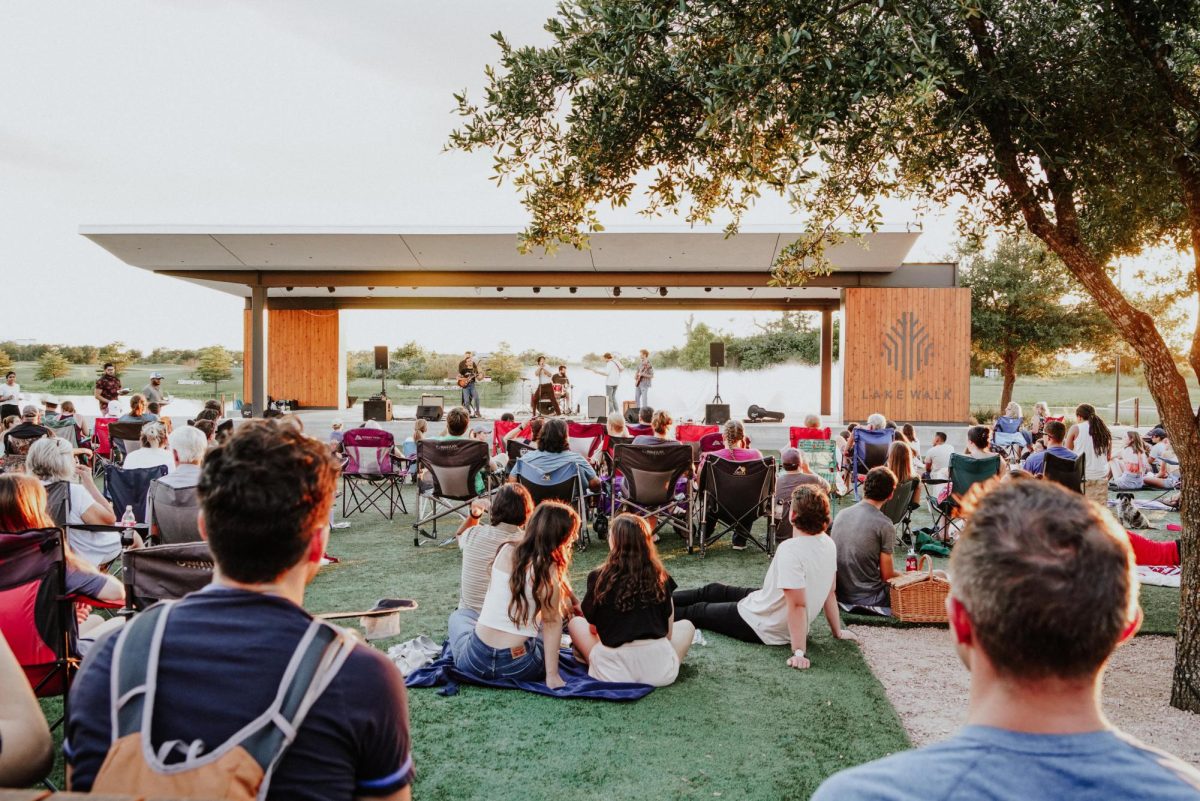In celebration of Grand Canyon National Park’s 100th anniversary, the jagged history of rock and mineral formation is uncovered in the latest exhibit at the Brazos Valley Museum of Natural History.
“Rocks: Earth’s Majestic Building Blocks” is an exclusive in-house showcase displaying rarely-seen rock and mineral specimens from the museum’s collection, alongside additional samples borrowed from the Houston Museum of Natural Science and the Texas A&M Department of Geology and Geophysics. With an array of vibrant crystals, stones and sediments, BVMNH encourages interaction with rocks beyond cobblestone walkways and concrete walls.
Deborah Cowman, executive director at BVMNH, said she is extremely proud to be showcasing “Rocks” because it focuses on basic geologic principles and highlights them with eye-catching specimens.
“One of the things that I’ve always thought is that rocks are so accessible,” Cowman said. “A rock can’t run away from you. They’re interesting, they’re different and they’re beautiful. It’s a whole world of curiosity, and I think the average person is drawn toward rock for some of its basic beauty.”
The exhibit is organized according to each stone’s classification and physical properties, from the hardened magma of igneous to the eroded clumps of sedimentary and the highly pressurized metamorphic. With over 5,000 documented minerals on the planet, Cowman said the museum has taken a boulder-sized task and weathered it into pebbles.
“I’m just drawn to the intricacy, the variety, the beauty and the utilitarian aspects,” Cowman said. “It’s just so much, and that was one of the challenges of this exhibit because it’s such a big topic. Our whole goal is to break these things into bite-size pieces so that everybody can enjoy them. As a natural history museum, that’s part of our mission — to make the natural world more accessible to everyone.”
“Rocks” displays obsidian arrowheads alongside banners illustrating the long history of stoneworking. Some of the methods featured date back as early as the 13th century when Ancestral Puebloans carved dwellings out of the face of a sandstone cliff, which are still standing today at Mesa Verde National Park in Colorado.
Stone carving is still common practice today, which is why among the geodes and quartz specimens the exhibit displays the meticulous work of local memorial artist Tony Watson, owner of Watson Signs & Monuments.
“I always laugh whenever I read ‘handcrafted,’ because now the new thing is to go back to the old-school way of doing things, but that’s all we ever do,” Watson said. “You can’t make machines that produce stonework the way it used to be produced. Stone will always be the stone, and the stone will always work the same way, but you’re not going to get the same thing out of it.”
Watson, who recently concluded his work on A&M’s Spirit Plaza between the YMCA and Coke buildings, said the museum’s exhibit will usher in a new perspective that he is happy to contribute to.
“What we want people to realize is that stone is so multifaceted,” Watson said. “It’s not just flooring and countertops. It’s not just boulders, and it’s not just monuments in a cemetery. It’s artwork. Stone will educate and ease pain, and it solves all kinds of problems.”
According to visiting professor of petrology Joseph Balta, rocks have always played an instrumental role in humankind’s existence, and the latest BVMNH exhibit helps capture it.
“Geoscience really is fundamental to decisions that almost everyone makes on a daily, weekly or monthly basis,” Balta said. “There’s a number of people who have written articles saying ‘We think that every student out there should have a chance to take a geology class,’ because it’s not just that you’re interacting with it so suddenly on a daily basis; sometimes you’re even interacting with it in a huge way whether you realize it or not.”
“Rocks: Earth’s Majestic Building Blocks” is on display through July 27.
‘Interesting, different, beautiful’
April 4, 2019
Photo by Photo by Olivia Treadwell
The Brazos Valley Museum of Natural History exhibit “Rocks: Earth’s Magestic Building Blocks” is open until July 27.
Donate to The Battalion
Your donation will support the student journalists of Texas A&M University - College Station. Your contribution will allow us to purchase equipment and cover our annual website hosting costs.







